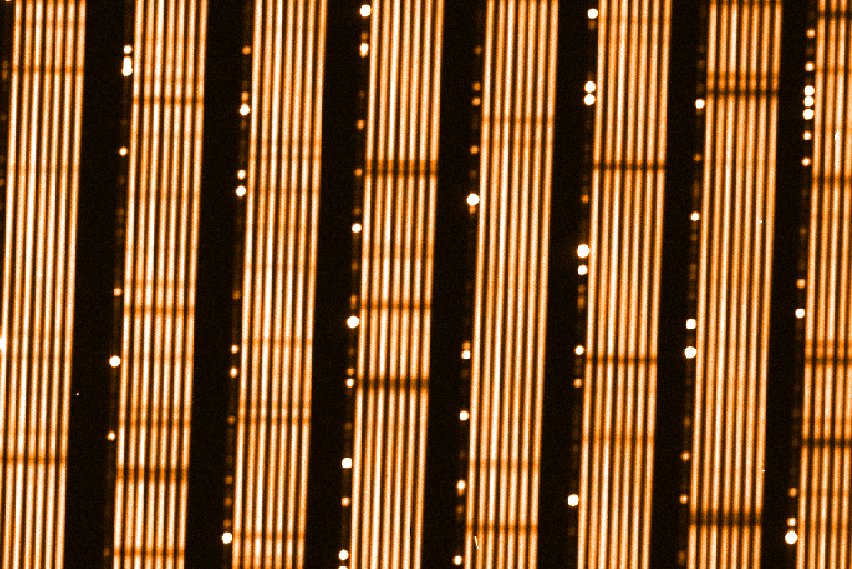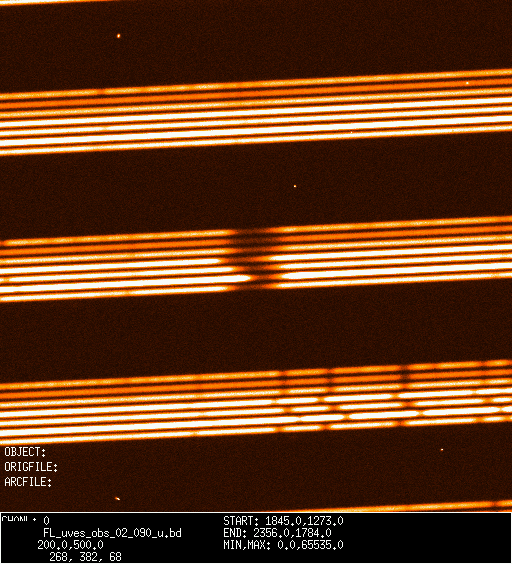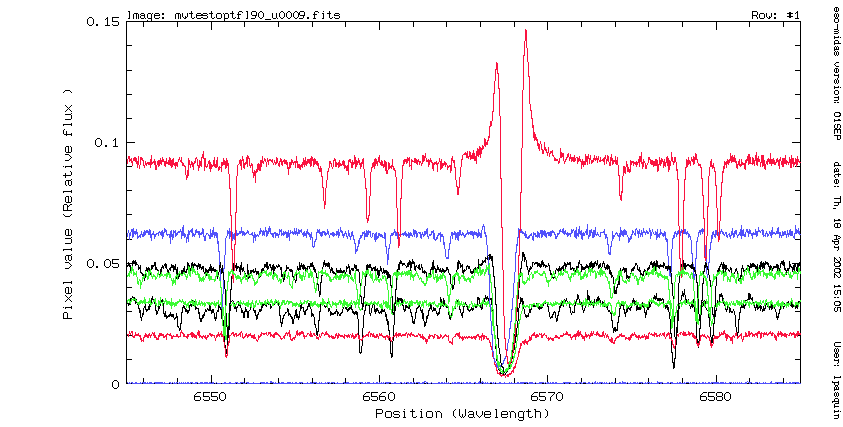Fibre link to UVES (red arm)

here bundle of 7 parallel lines.The calibration fibre produces the bright dots
on the left of each order. In this frame, the 7 fibres are fed by the day sky
spectrum, while the eight fibre is fed by a Th-Ar lamp. Preliminary analysis of the
data confirms the simulation results: the crosstalk between adjacent fibres is limited to <1%.
UVES is the high resolution spectrograph of the VLT, located at the B Nasmyth platform of Kueyen. UVES has been designed to work in long slit mode but thanks to a rather small modification, it was possible to add a fibre mode on its Red Arm: the fibres are injected just before the slit through a projector, which changes the F/3 fibre exit to the F/10 UVES aperture.
Each positioner plate has 8 fibres connected to the Red Arm of UVES. With an aperture on the sky of 1.0 arcsec, the fibres projects on 5 UVES pixels resulting in a resolving power R=47000. Only three standard UVES setups are offered, with central wavelenghts of 520, 580, and 860 nm. All 16 fibres coming from the two positioner plates are mounted on two parallel slits.
In addition to the 8 fibres per plate, an extra fibre is available for simultaneous calibration. This fibre is used to obtain very accurate radial velocities with UVES with the method pioneered by the Geneva group. However, due to the large UVES interorder separation, only 7 fibres can be devoted to astronomical objects when the simultaneous calibration fibre is used.
For faint objects, one or more fibres can be devoted to record the sky contribution. One attractive aspect is that UVES can be simultaneously used with GIRAFFE within FLAMES. The exposure times for the two spectrographs need not be the same. Given the higher resolution and the large spectral coverage (200 nm) provided by UVES, we expect that several programs will benefit from these combined observations.


